Building your marketing strategy as a growth/content marketing agency can be frustrating.
Why? Because you are familiar with all the options, strategies and funnels, you can create and take advantage of – but you also know you have to limit yourself to budget/team capacity, etc.
There’s another aspect – being an agency and working with a lot of our clients on their content marketing / social / SEO / paid efforts – you kind of feel like you have to lead by example.
I mean, if you’re hiring a company to strategize, optimize and manage your marketing – you’re expecting them to have amazing accounts, right?
There’s also a pros side to things – we, as a young agency, are facing the same issues any startup is facing in ramping up their marketing efforts – and as big believers of eating your own dog food – this experience just helps us understand our startup clients even more.
In this post, I want to share with you our company’s marketing philosophy, but more than that – I want to show you how we prioritized our initial marketing efforts, what we’re focusing on start with and why.
I’ll be sharing metrics, timelines and all, so keep reading for that.
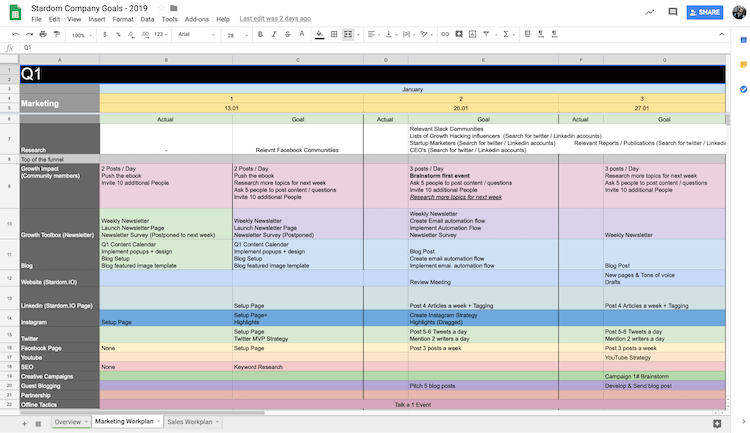
Starting with timeframes
I started off by planning Stardom’s marketing effort for Q1 only.
Why? Because my first priority will be to focus on “what’s going to move the needle now.”
There are a lot of options for what we can do to market the company, but I wanted to stay focused entirely on immediate effort and faster results.
So I’ve decided to plan our first Q with the rest in mind, but not in focus.
This was good for me in several ways:
- I want to do everything. I can’t. Committing to only “some” things for 3 months is more comfortable for me.
- I don’t know what’s going to work, I want to be invested in the marketing experiments we’re doing, but also know that I’m going to have to re-think it in just 3 months. It will force to face what’s working and what’s not.
- Planning for 3 months, also means you’re setting expectations and goals per channel for the next 3 months. This helped see much more clearly what I think are the lowest hanging fruits.
For example, I think Instagram is a must have in our marketing mix. But understanding my business goals – is Instagram get me to where I want to get to in 3 months? No.
Should I just forget it? Also no, but definitely understand that for these 3 months, Instagram is just infrastructure work, not my “marketing activity” focus.
First focal point: Cashflow is king
In my philosophy, services provided, and agencies shouldn’t raise money unless they’re building a product or in-house tools.
At least not a the beginning.
I believe you need to start from focusing on what you’re good at, sharpen your skills and services to build client traction.
That being said – spending money on marketing and sales to increase revenue makes sense.
In a different post I’ll write on how we’re treating sales, but for now, I’ll focus this post on the marketing aspect.
My approach to marketing is that we need to start small and in a way we think will be as cost effective as possible to generate new leads without spreading too thin in resources.
What I love about this situation the most is that it forces me to really hone my values as an agency and as a marketer.
Agencies tend to complain about marketing budget issue with their client.
I hate sentences such as
“If we just had to more budget we could’ve done this and this” or when a client approaches and you start by saying “well, with this budget, there’s not much you can do.”.
I don’t believe in that approach is it is problems focused and not solution focused.
Marketing can be done in any budget – it just has to be smart, goal-oriented and focus on the right efforts.
For us, I wanted to start by making investments in the areas I believe can bring us the most.
Where’s our focus at (there’s a twist)
When talking about marketing or growth, most people tend to focus “acquisition” channels – meaning they’ll immediately allocate their budgets to tactics like SEO, Social Media, Paid advertising, Content marketing, etc.
I believe that figuring out your “retention” strategies at the beginning is much more critical.
Why? because bringing in new leads/traffic is hard and expensive and is an ongoing effort that can take a lot of time to nurture.
For example:
Running ads – It takes time, and as long as you’re doing it, it means you’re spending money daily. You get the attention – people come to your website, blog, lead magnet – most won’t convert at step 1 (at least not to clients). It’s an excellent scaling up strategy, but very costly for early wins.
SEO – Again, takes a lot of time to get those visitors in, and they’re just visitors at step one, most won’t convert even if they found your content interesting. You’re looking at a 6 months process easily.
Social Media – for sure, I think social media (As well as blogging) is one of the most important channels to build relationships with and developing your long term distribution strategy.
In the beginning, I was thinking about how can we leverage any channel, etc.
But again – to make Instagram or Twitter work as a marketing channel will take a few good months (not just to grow the channel, but to actually make it work) and again, most of the people you interact with, won’t become a returning interaction soon enough.
You’ll need to fight for their attention over and over again.
Here are the 3 elements I wanted to focus on:
- Retention – Getting the same audience to engage with us over and over again at the lowest budget.
- Value – How can we provide the most value to our target audience.
- Distribution – What’s the most comfortable, fastest way we can reach new audiences
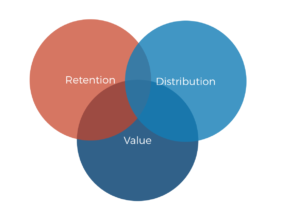
The channels we chose:
Eventually, we settled in for 4 marketing channels for Q1:
Channel 1:
Facebook group (called ‘Growth Impact’):
It’s an Israeli group dedicated to growth hackers. We have an international one coming up later this year, but the Israeli was first.
Why start with a community? Communities take a lot of work but
- They are highly viral – it’s easy for people to add people in and usually are happy too.
- Retention is very high – people communicate and stay on the community to talk with others. This also means that every time we release a new blog post or any other type of content- we have a group of people who always sees it and is highly relevant and targeted.
- We can provide a lot of value in it, consistently.
- Owning the “best group” means owning your space.
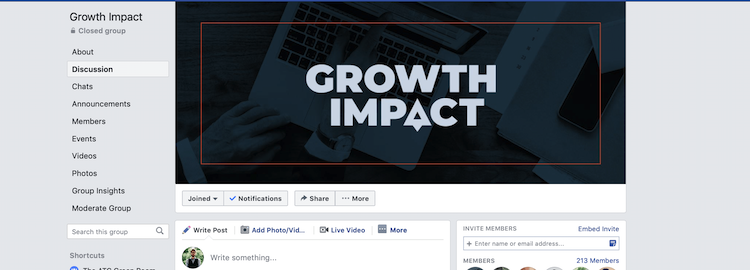
Channel 2:
Blog (“The growth machine”) – I’m a big believer that blogs that have their own style, the tone of voice and provide value – is one of the best marketing channels out there.
I know, some people say the market is too saturated, etc., etc.
But I think blogging is like music.
The fact that their artists such a Leonard Cohen doesn’t mean you shouldn’t make your own music -it just has to be good enough that people would want to listen to it.
I also think that blogging is the best format for us to deliver value (how to’s, transparency and more).
Outstanding content resonates well and can be viral and I also think it brings people closer to your brand.
Yes, it takes time to build a following – but if you write a good blog post – results can be really good for you.
Also, it opens up the door to new marketing opportunities (which I’ll discuss soon).
My goal here is mostly about consistency and quality.
Channel 3:
Newsletter (The Growth Toolbox):
The newsletter is both a retention machine and a great value giving opportunity.
Your newsletter gives you the opportunity to reconnect with people who are already interested in the value you provide and it lets you have direct access to them over and over again.
It’s a way to communicate your messages in a closed environment that is based on the relationships you’ve established.
It’s also the best way to keep them up to date without having to create media campaigns hoping someone will notice.
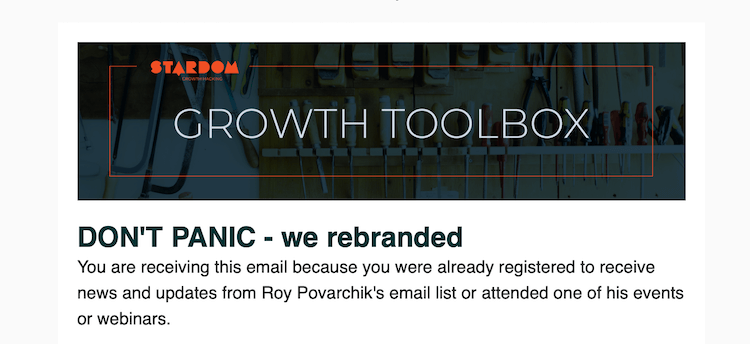
Channel 4:
Guest blogging
I think guest blogging is one of the best ways to build a brand in your niche, get the attention of a new audience and multiply your distribution.
- Having your name on popular websites builds trust with your and your knowledge/brand.
- You get the attention of their readers (that you don’t usually get).
- You get the distribution of their newsletter
- You get the distribution from their social media efforts
- You build relationships with key influencers in your industry.
I think the only “partnership” channel that works better is webinars. We will get there in Q2.
The real estate strategy
If you’ve noticed, each channel is set up as a different brand.
- Newsletter- Growth Toolbox
- Community – Growth Impact
- Blog – Growth Machine.
The reason they all have names (and unique identities) is that I believe every channel should work well with the other channels – but also have its own uniqueness and value proposition.
You have much more options to market/monazite/ partner up /grow an independent newsletter than you have for a company’s newsletter.
Also, the type of content you’ll expect to get one is different.
In the age of digital marketing – every platform can be its own product and real estate.
That’s a significant investment we’re making for the future.
What about all the other channels
I’ll keep this short.
We are building our presence on Instagram, Twitter, Linkedin etc. – but I don’t focus on it right now.
Not focusing on it means that we’re building the habits needed to work with these channels, but we won’t create a more pro-active strategy for those in the next 2.5 months.
We are pushing content and all – but I don’t care about metrics there yet.
We will get there, but not yet.
Focus above all.
The X factor
The X factor is the leverages we get to pull that others might not have.
You know it when you read case studies like “how we got 1 million users in a month,” and you think like “wow, that’s amazing! How come it doesn’t work for me? :(“
And then you do some research, and you find out they never bother to tell you that they have a parent company that makes 2Billion dollars profit a month and that distributed their product as an up-sell to their 500 Million existing clients?
Not exactly the “we started from scratch” they were portrayed in the case study, right?
I hate reading those.
So I want to list some of the “assets” we had that made us make the choices we made.
My personal brand “Roy Povarchik” has been in development for a few years.
I’m not an “influencer” in the term of having millions of followers – but:
- I do have enough of a presence and relationships with our target audience that I can bring both influencers in the field to work with us (this is how we get some people from very hot startups to join forces with us, talk about what we do, etc.). I’ve contributed to blogs such as Buffer, Buzzsumo, Social Media Examiner and more.
- I have an initial mailing list that I’m leveraging for this effort (I’m using only a relevant segment of 3k people, though my mailing list has been inactive in the last 8 months or so).
- I have a podcast called ‘Strike Gold,’ in which my co-host Jonathan Kahn and I interview growth and marketing experts from leading companies worldwide (Monday.com, Twitch, Elementor, Slack and more) – which helps me create more content and establish authority besides Stardom.IO’s marketing efforts.
But really, that’s it.
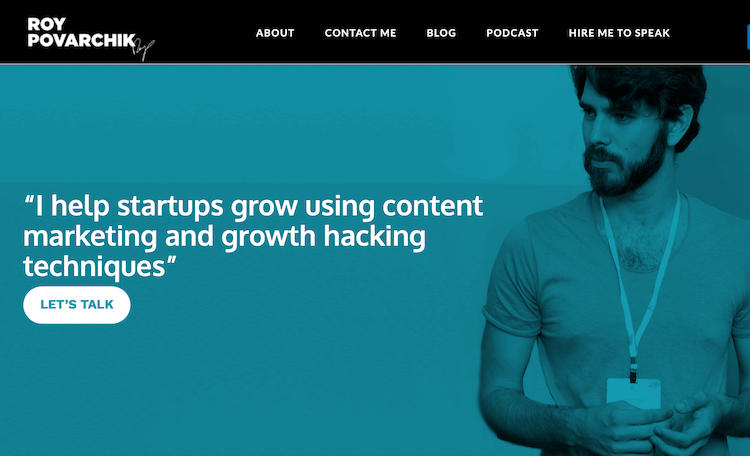
Metrics and progress
Because marketing for Q1 is more about getting the team up to speed than gaining tons of traction, I value our activity goals more than metrical goals.
But I’ll specify.
Newsletter:
My goal is to get to 5k subscribers within the next 2.5 months. Right now we’re on 3K.
Community:
Get to 500 quality members (we’re now on 210).
My north star metric in the city is actually comments/post ratio (I’ll write a post on why later on), number of posts we post in the community (2- 3 a day) and the number of events (2 per Q targeting over 200 attendees total).
Website/blog
I’ll be blogging around once a week, still not doing any heavy lifting with distribution, but building the foundations.
I’m targeting reaching a goal of 2k monthly visitors by the end of the Q.
Guest blogging:
My goal is to get 2 guest posts a month out there on medium-top tier publications.
This is it for now
I’m curious to know,
did this post help you in any way?
Are there any bits and pieces of information you’d want me to share more about our marketing process?
If so – please let me know either in the comments or tweet me @roypovar or @stardom.io
